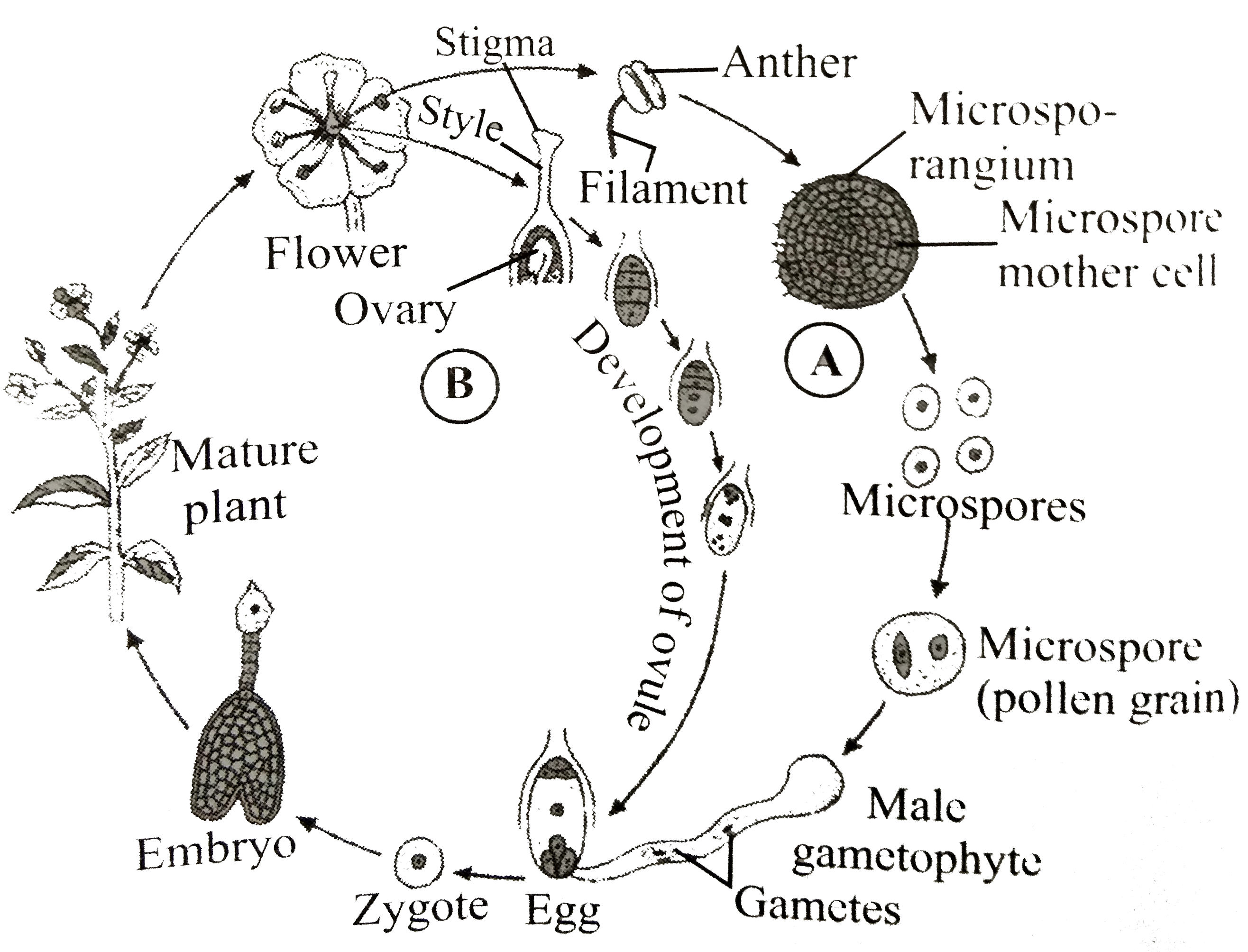In a typical angiospermic ovule
Body is curved like horse shoe
The body rotates by 180∘
Both body and embryo sac are curved
Funicle is long and coiled around body
The correct Answer is:2
Step-by-Step Solution:
1. Understanding Angiospermic Ovule:
- Angiosperms are flowering plants, and their ovules are crucial for reproduction. The ovule is the structure that develops into a seed after fertilization.
2. Structure of the Ovule:
- A typical angiospermic ovule consists of several key components:
- Integument: The outer protective layer.
- Micropyle: The opening at one end of the ovule.
- Chalaza: The opposite end of the micropyle.
- Funiculus: The stalk that attaches the ovule to the ovary wall.
3. Embryo Sac Composition:
- Inside the ovule, there is an embryo sac which contains:
- Antipodal Cells: Typically three cells located at the chalazal end.
- Polar Nuclei: Two nuclei located in the center of the embryo sac.
- Synergids: Two cells located near the micropyle, assisting in fertilization.
- Egg Cell: One cell located adjacent to the synergids.
4. Shape and Orientation:
- The ovule is often described as being 180 degrees turned, meaning that its body is oriented in a specific way that is not horseshoe-shaped. The body of the ovule is curved but not in a horseshoe shape.
5. Evaluating Options:
- Option 1: "Body is curved like Horseshoe" - This is incorrect.
- Option 2: "Body rotated by 180 degrees" - This is correct.
- Option 3: "Both body and embryo sac are curved" - This is incorrect; only the body is curved.
- Option 4: "Funicle is long and coils around the body" - This is incorrect; the funicle does not coil 360 degrees around the ovule.
6. Conclusion:
- The correct answer is that the body of the ovule is rotated by 180 degrees, making option B the right choice.
- Angiosperms are flowering plants, and their ovules are crucial for reproduction. The ovule is the structure that develops into a seed after fertilization.
- A typical angiospermic ovule consists of several key components:
- Integument: The outer protective layer.
- Micropyle: The opening at one end of the ovule.
- Chalaza: The opposite end of the micropyle.
- Funiculus: The stalk that attaches the ovule to the ovary wall.
- Inside the ovule, there is an embryo sac which contains:
- Antipodal Cells: Typically three cells located at the chalazal end.
- Polar Nuclei: Two nuclei located in the center of the embryo sac.
- Synergids: Two cells located near the micropyle, assisting in fertilization.
- Egg Cell: One cell located adjacent to the synergids.
- The ovule is often described as being 180 degrees turned, meaning that its body is oriented in a specific way that is not horseshoe-shaped. The body of the ovule is curved but not in a horseshoe shape.
- Option 1: "Body is curved like Horseshoe" - This is incorrect.
- Option 2: "Body rotated by 180 degrees" - This is correct.
- Option 3: "Both body and embryo sac are curved" - This is incorrect; only the body is curved.
- Option 4: "Funicle is long and coils around the body" - This is incorrect; the funicle does not coil 360 degrees around the ovule.
- The correct answer is that the body of the ovule is rotated by 180 degrees, making option B the right choice.
Similar Questions
Knowledge Check
In a typical angiospermic plant, mature female gametophyte is :
A7-celled and 8-nucleatedB8-celled and 7-nucleatedC3-celled and 3-nucleatedD8-celled and 8-nucleatedWhich cell is triploid in a typical angiospermic plant ?
AZygoteBPrimary endosperm cellCMicrospore mother cellDPollen grainIn a typical angiosperm anther is :-
AMonothecous and bisporangiateBDithecous and tetrasporangiateCMonothecous and monosporangiateDDithecous and bisporangiate
What is flower? Describe the parts of a typical angiospermic flower.
View Solution
The given figure shows to phases, A and B of a typical angiospermic life cycle. Select the correct option regarding it.
View SolutionIf a typical angiospermic anther has 25 microspore mother cells in its each sporangium, calculate the total number of microspore tetrads, pollen grains and male gametes respectively produced by this anther.
View SolutionA typical angiospermous ovule is attached to the placenta by means of a stalk called X. Body of the ovule fuses with X in the region called Y. Identify X and Y.
View SolutionThe minimum number of mieotic divisions required to produce 200 seeds of a typical angiospermic plant are
View Solution
